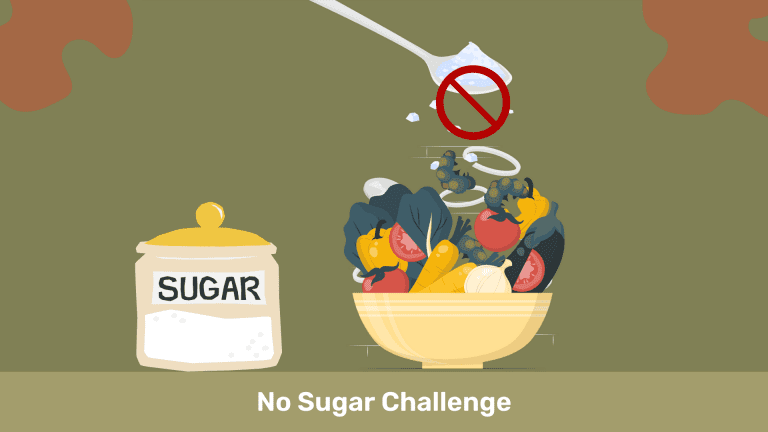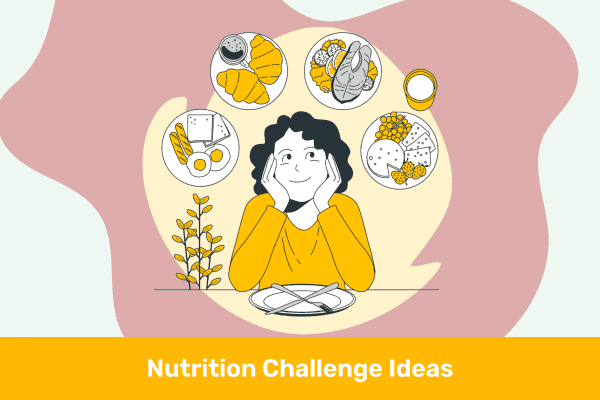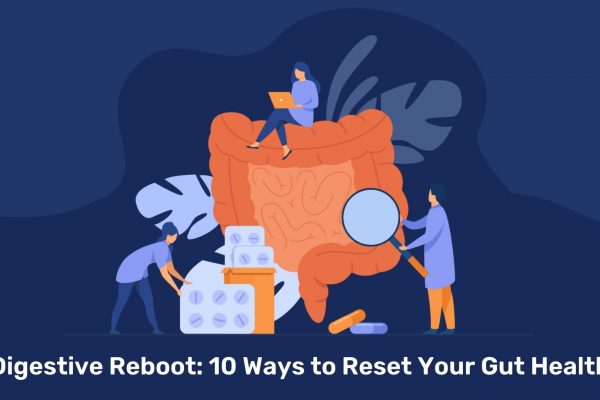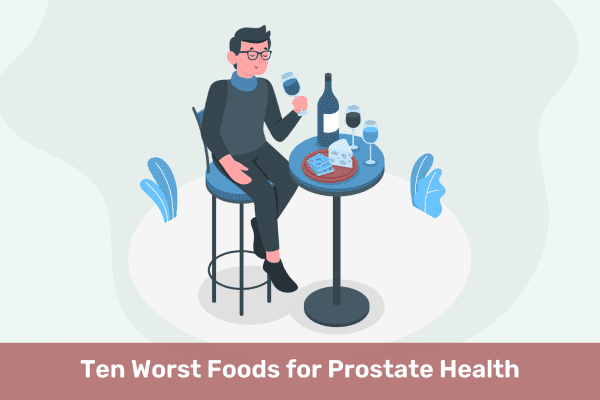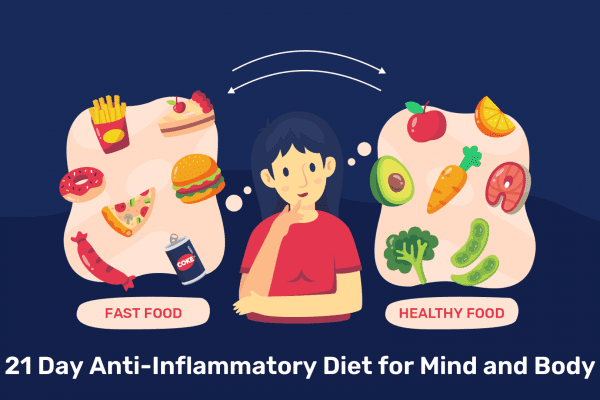Introduction
In a world where sugar-laden temptations lurk around every corner, the “No Sugar Challenge” has emerged as a powerful beacon of hope for those seeking to transform their health and well-being. This intriguing journey involves a conscious and deliberate decision to abstain from the sweet temptations that often dominate our diets. It’s a challenge that holds the promise of not only reshaping our bodies but also redefining our relationship with food.
What is a No Sugar Challenge?
The “No Sugar Challenge” is not merely a passing trend; it’s a lifestyle choice gaining momentum with each passing day. As the name suggests, it encourages participants to eliminate or drastically reduce their sugar intake, both natural and added, for a specific period. The challenge can range from a short but intense 7-day commitment to an extended 30-day journey, depending on individual goals and preferences.
Why embark on such a challenge?
The answer lies in the profound impact sugar has on our health. Excessive sugar consumption has been linked to a plethora of health issues, from obesity and type 2 diabetes to heart disease and dental problems. This challenge serves as a wake-up call, a call to arms against the hidden dangers of sugar that often go unnoticed in our daily lives.
Intriguingly, the interest in reducing sugar consumption and embracing the “No Sugar Challenge” has grown exponentially in recent years. The mounting evidence of sugar’s detrimental effects on our health has ignited a collective desire for change. People are increasingly aware of the importance of making conscious dietary choices, and the “No Sugar Challenge” has emerged as a popular vehicle for that transformation.
So, whether you’re a health enthusiast looking to further enhance your well-being or someone simply curious about the potential benefits of a low-sugar lifestyle, join us on this enlightening journey. In this article, we will delve deeper into the “No Sugar Challenge,” exploring its nuances, health benefits, and the path to a sweeter, sugar-free future.
Understanding Sugar
Sugar is a ubiquitous ingredient in our diets, found in various forms and added to countless foods and beverages. While it can provide a sweet taste and energy, understanding the different types of sugars, the health implications of excessive consumption, and the alarming statistics regarding sugar intake in society is crucial for making informed dietary choices.
A. Different Types of Sugars: Natural vs. Added
Natural Sugars:
- Fructose: Found naturally in fruits, honey, and some vegetables, fructose is a natural sugar that comes with fiber, vitamins, and antioxidants.
- Lactose: Present in milk and dairy products, lactose is a natural sugar that provides energy along with essential nutrients like calcium and protein.
- Sucrose: Also known as table sugar, sucrose is a disaccharide made up of glucose and fructose. It’s naturally occurring in sugar cane, sugar beets, and some fruits like oranges.
Added Sugars:
- High-Fructose Corn Syrup (HFCS): A common sweetener in processed foods and sugary beverages, HFCS is derived from corn and is often used to enhance flavor.
- Table Sugar (Sucrose): While natural, sucrose can also be added to a wide range of foods and beverages during processing or cooking.
- Honey, Maple Syrup, and Agave Nectar: These are often perceived as healthier alternatives to table sugar, but they are still considered added sugars when used in excess.
B. Negative Effects of Sugar on Health
Excessive sugar consumption can have profound health implications, some of which include:
- Weight Gain and Obesity: Sugary foods and drinks are calorie-dense but often lack essential nutrients. Overconsumption of sugar can contribute to weight gain and obesity, which are risk factors for numerous health conditions.
- Type 2 Diabetes: High sugar intake can lead to insulin resistance, increasing the risk of type 2 diabetes, a chronic condition characterized by elevated blood sugar levels.
- Heart Disease: A diet high in added sugars is associated with an increased risk of heart disease. It can raise blood pressure, promote inflammation, and contribute to unhealthy lipid profiles.
Also Read: 21 Day Anti-Inflammatory Diet
- Dental Health Issues: Sugary foods and drinks are the primary culprits behind tooth decay and cavities. Bacteria in the mouth feed on sugar, producing acid that harms tooth enamel.
- Fatty Liver Disease: Excessive fructose consumption, especially from added sugars like HFCS, can contribute to non-alcoholic fatty liver disease (NAFLD), a condition that affects liver health.
- Mood and Mental Health: High sugar intake can lead to blood sugar spikes and crashes, which may affect mood and mental health. It’s been linked to increased risk of depression and anxiety.
C. Statistics on Sugar Consumption in Society
The statistics on sugar consumption in society are concerning:
Global Sugar Consumption:
According to the World Health Organization (WHO), the global average sugar consumption was approximately 17 teaspoons (71 grams) per person per day. This exceeds the recommended daily limit of added sugars.
United States:
The American Heart Association (AHA) recommends that women limit their added sugar intake to no more than 100 calories (about 25 grams or 6 teaspoons) per day and men to 150 calories (about 37.5 grams or 9 teaspoons) per day.
Childhood Sugar Consumption:
The CDC reported that from 2015 to 2016, children and adolescents in the United States consumed an average of about 16% of their daily calories from added sugars.
Sugary Beverage Consumption:
According to a report from the National Cancer Institute, in 2017, sugary drinks accounted for 7.3% of total daily calories in the U.S. diet.
Global Trends:
A study published in the journal PLOS ONE in 2013 analyzed global trends in sugar-sweetened beverage consumption and found that the average intake per person increased from 9.4 liters per year in 1960 to 43.5 liters per year in 2010.
Healthcare Costs:
The healthcare costs associated with sugar-related health conditions, including obesity, diabetes, and heart disease, are substantial. However, specific figures may vary over time and by region.
The No Sugar Challenge
The No Sugar Challenge is a dietary and lifestyle initiative that encourages individuals to significantly reduce or eliminate their consumption of added sugars for a specified period. This challenge has gained popularity as people become more conscious of the health risks associated with excessive sugar intake and seek to improve their overall well-being. Here, we’ll delve into the details of the No Sugar Challenge, including what it entails, duration options, and its underlying goals.
A. What the No Sugar Challenge Entails
The No Sugar Challenge primarily involves abstaining from consuming foods and beverages that contain added sugars. Added sugars are sugars and syrups that are added to foods and drinks during processing or preparation. This includes sugars like sucrose (table sugar), high-fructose corn syrup, and various other sweeteners added to processed foods, soft drinks, and desserts.
During the challenge, participants typically focus on the following aspects:
- Reading Labels: Participants learn to read food labels to identify hidden sources of added sugars in products. This helps them make informed choices.
- Eliminating Sugary Beverages: Sugary drinks like soda, fruit juices with added sugars, and sweetened coffee beverages are often eliminated or replaced with healthier options like water, herbal tea, or unsweetened alternatives.
- Choosing Whole Foods: The challenge encourages the consumption of whole, unprocessed foods like fruits, vegetables, lean proteins, and whole grains, which naturally contain fewer added sugars.
- Meal Preparation: Many participants find success by preparing their meals at home, allowing them to control ingredients and avoid added sugars.
- Natural vs. Added Sugars: Participants must distinguish between natural sugars found in whole foods like fruits and vegetables (fructose in fruit, lactose in milk) and added sugars incorporated into processed foods, beverages, and sweets (such as sucrose, high-fructose corn syrup, and other sweeteners).
B. Duration
7-Day Challenge:
A brief but intense introduction to the No Sugar Challenge, often chosen by beginners or those looking for a short-term reset.
- Pros: A short, manageable duration that can serve as an introduction to sugar reduction. It may help participants identify sugar sources in their diets.
- Cons: May not lead to significant long-term habit changes, as it is relatively brief.
14-Day Challenge:
A two-week challenge that allows participants to gain a deeper understanding of their sugar consumption and its effects on their bodies.
- Pros: Provides more time to adapt to a sugar-free lifestyle, making it easier to notice changes in energy levels and cravings.
- Cons: Still relatively short for developing sustainable habits.
21-Day Challenge:
A three-week challenge that is often considered an ideal duration for developing new habits and breaking sugar cravings.
- Pros: Offers a balanced middle-ground, allowing participants to experience significant benefits and begin forming healthier habits.
- Cons: Some may find it challenging to sustain the challenge for three full weeks.
30-Day Challenge:
A popular choice, the 30-day challenge provides an extended period to develop new habits and potentially experience significant health improvements.
- Pros: Provides a more extended period to break sugar cravings, establish healthier habits, and experience noticeable health improvements.
- Cons: Can be challenging, especially for those with strong sugar cravings initially. Requires a longer commitment.
Custom Duration:
Participants can tailor the challenge to their preferences, extending it beyond 30 days if they wish to continue.
- Pros: Allows for a deeper transformation of eating habits, making it more likely for participants to adopt a sustainable, low-sugar lifestyle.
- Cons: Requires a high level of commitment and may be difficult to maintain over an extended period.
The duration of the challenge should align with individual goals and readiness to make dietary changes. Some individuals start with a shorter challenge and gradually extend it as they become more comfortable with a reduced-sugar lifestyle.
C. Benefits of Reducing Sugar Intake
Reducing sugar intake offers a multitude of health benefits that extend beyond just curbing your sweet tooth. Here, we explore the potential health advantages of reducing sugar consumption:
1. Weight Management:
- Weight Loss: One of the most noticeable benefits of reducing sugar intake is the potential for weight loss. Sugary foods and beverages are calorie-dense but often lack essential nutrients. By cutting back on these empty calories, you can create a calorie deficit, which, over time, can lead to weight loss.
- Appetite Control: High sugar intake can lead to blood sugar spikes and crashes, which can result in increased hunger and cravings. Reducing sugar helps stabilize blood sugar levels, leading to better appetite control.
Also Read: How to create an office weight loss challenge?
2. Improved Dental Health:
- Reduced Risk of Tooth Decay: Sugars feed harmful bacteria in the mouth, which produce acid that erodes tooth enamel, leading to cavities and tooth decay. Cutting back on sugar helps maintain better oral health.
- Gum Health: High sugar consumption can also contribute to gum disease and inflammation. Reducing sugar intake may help prevent these issues.
3. Better Blood Sugar Control:
- Prevention of Insulin Resistance: Excessive sugar intake can lead to insulin resistance, a condition in which cells become less responsive to insulin, resulting in elevated blood sugar levels. By reducing sugar consumption, you can lower the risk of developing insulin resistance.
- Stable Energy Levels: A diet high in sugar can cause blood sugar spikes followed by crashes, leading to energy fluctuations and fatigue. Reducing sugar intake helps maintain stable energy levels throughout the day.
4. Reduced Risk of Chronic Diseases:
- Lower Risk of Type 2 Diabetes: Excessive sugar consumption is a significant risk factor for type 2 diabetes. By reducing sugar intake, you can lower your risk of developing this chronic condition.
- Heart Disease Prevention: High sugar consumption has been linked to an increased risk of heart disease. Lowering sugar intake can lead to improved heart health by reducing risk factors such as obesity, high blood pressure, and unhealthy lipid profiles.
- Lower Risk of Fatty Liver Disease: Excessive fructose consumption, particularly from added sugars like high-fructose corn syrup, can contribute to non-alcoholic fatty liver disease (NAFLD). Reducing sugar intake can help prevent or manage this condition.
- Cancer Risk Reduction: Some studies have suggested a potential link between high sugar consumption and certain types of cancer, such as pancreatic and colorectal cancer. While more research is needed, reducing sugar intake may be a prudent step for cancer prevention.
- Improved Brain Health: There is emerging evidence that excessive sugar consumption may have adverse effects on cognitive function and increase the risk of cognitive decline. Reducing sugar intake may support better brain health.
The No Sugar Challenge is a dietary initiative aimed at reducing or eliminating added sugars from one’s diet for a specified duration. It offers participants an opportunity to improve their health, break sugar addiction, and gain valuable nutritional knowledge while aligning with their individual goals and preferences.
Preparing for the No Sugar Challenge
Embarking on the No Sugar Challenge requires careful preparation to ensure a successful and manageable journey. This preparation encompasses mental and physical readiness, an understanding of how to navigate food labels, and knowledge of suitable sugar-free alternatives.
A. Preparing Mentally and Physically:
- Set Clear Goals: Clearly define your objectives for the challenge, whether it’s weight loss, improved energy levels, or better overall health. Having specific goals will help motivate you throughout the challenge.
- Gradual Reduction: If you’re accustomed to a high-sugar diet, consider gradually reducing your sugar intake in the days or weeks leading up to the challenge. This can help lessen withdrawal symptoms and cravings.
- Mindful Mindset: Develop a mindful approach to eating. Focus on savoring the natural sweetness of foods like fruits and adjust your taste buds to appreciate less-sweet options.
- Plan Meals: Plan your meals and snacks in advance. Having a structured eating plan can reduce impulsive choices and make it easier to stick to your sugar-free goals.
- Support System: Inform friends and family about your challenge and seek their support. Having a support system can be invaluable when facing temptations.
- Stay Hydrated: Drink plenty of water to stay hydrated and help reduce sugar cravings. Herbal teas and infused water can also provide flavor without added sugars.
- Stress Management: Practice stress-reduction techniques like meditation, yoga, or deep breathing. Stress can trigger sugar cravings, so managing stress is crucial for success.
B. Importance of Reading Food Labels:
- Identify Hidden Sugars: Food labels can be deceiving, as sugar hides under various names (e.g., sucrose, high-fructose corn syrup, agave nectar). Familiarize yourself with these terms and scrutinize labels for added sugars.
- Check Serving Sizes: Pay attention to serving sizes on food labels. A product may seem low in sugar, but if the serving size is small, the actual sugar content may be higher when consumed in typical portions.
- Choose Whole Foods: Whenever possible, opt for whole, unprocessed foods that don’t require extensive label reading. These foods are naturally low in added sugars.
- Limit Processed Foods: Processed and packaged foods are more likely to contain added sugars. Reduce your reliance on these items during the challenge.
- Focus on Nutrients: Instead of solely looking for the absence of sugar, prioritize foods that offer nutritional value like fruits, vegetables, lean proteins, whole grains, and healthy fats.
Read Further: Top 20 Immune-Boosting Foods
C. Sugar-Free Alternatives:
- Natural Sweeteners: Use natural sweeteners like stevia, monk fruit, or erythritol as alternatives in recipes and beverages.
- Fruit: Fresh and frozen fruits can satisfy your sweet cravings with natural sugars. Berries, apples, and citrus fruits are excellent choices.
- Unsweetened Dairy: Opt for plain, unsweetened dairy products like yogurt and milk. You can add your sweeteners, such as fresh berries or a drizzle of honey.
- Nuts and Seeds: Nuts and seeds provide a satisfying crunch and healthy fats. They can be a tasty snack option.
- Dark Chocolate: Choose dark chocolate with a high cocoa content (70% or higher), which is lower in sugar than milk chocolate.
- Homemade Treats: Experiment with homemade recipes using sugar alternatives like mashed bananas, applesauce, or dates to sweeten baked goods naturally.
- Seltzer and Sparkling Water: If you enjoy carbonated beverages, opt for unsweetened seltzer or sparkling water with a splash of citrus for flavor.
By preparing both mentally and physically, understanding how to read food labels, and having a list of sugar-free alternatives, you can approach the No Sugar Challenge with confidence and increase your chances of achieving your health and wellness goals.
Common Challenges and Solutions
The No Sugar Challenge can be rewarding for your health, but it may also present several common challenges. Here, we highlight these challenges and provide strategies to overcome them:
1. Sugar Cravings:
Challenge: Cravings for sugary foods can be intense, especially in the initial days of the challenge.
Solution:
- Gradual Reduction: Gradually reduce sugar intake before starting the challenge to ease into it.
- Opt for Fruit: Satisfy sweet cravings with natural sugars from fruits like berries or apples.
- Stay Hydrated: Sometimes thirst is mistaken for hunger or sugar cravings. Drink water or herbal tea to stay hydrated.
2. Social Situations:
Challenge: Social gatherings and events often involve sugary foods and drinks.
Solution:
- Plan Ahead: Bring your own sugar-free snacks or beverages to events.
- Communicate: Inform friends and family about your challenge and ask for their support.
- Focus on Socializing: Concentrate on enjoying the company rather than the food.
3. Hidden Sugars:
Challenge: Sugar can hide in unexpected places, such as condiments, sauces, and processed foods.
Solution:
- Read Labels: Carefully read food labels for hidden sugars and learn to recognize sugar synonyms.
- Cook at Home: Preparing meals at home gives you control over ingredients.
- Choose Whole Foods: Opt for whole, unprocessed foods to minimize hidden sugars.
4. Sugar Withdrawal Symptoms:
Challenge: Reducing sugar intake can lead to withdrawal symptoms like headaches, irritability, and mood swings.
Solution:
- Stay Hydrated: Drink plenty of water to help flush out toxins and reduce symptoms.
- Rest and Sleep: Ensure you get adequate rest and sleep to manage mood swings and cravings.
- Stay Committed: Remember your goals and stay committed to the challenge.
5. Lack of Convenience Options:
Challenge: Finding convenient, sugar-free options when dining out or on the go can be challenging.
Solution:
- Plan Ahead: Research and identify restaurants or eateries that offer sugar-free or customizable options.
- Carry Snacks: Keep sugar-free snacks like nuts, seeds, or fruit with you for emergencies.
- Be Assertive: Don’t hesitate to ask for modifications when ordering food.
6. Emotional Eating:
Challenge: Emotional triggers can lead to sugar cravings and overindulgence.
Solution:
- Practice Mindfulness: Identify emotional triggers and engage in mindfulness techniques to address them.
- Find Alternatives: Replace emotional eating with other activities like exercise, journaling, or deep breathing.
7. Boredom or Monotony:
Challenge: Eating a limited variety of foods may become monotonous.
Solution:
- Experiment: Try new sugar-free recipes and explore a variety of fruits, vegetables, and whole grains.
- Mix It Up: Use different cooking methods and seasonings to add flavor to your meals.
- Create Variety: Prepare meal plans with diverse ingredients to prevent boredom.
8. Social Pressure:
Challenge: Friends and family may encourage you to indulge in sugary treats.
Solution:
- Be Confident: Politely decline and explain your commitment to the challenge.
- Offer Alternatives: Suggest sugar-free options or alternatives to sugary treats.
- Stay Resilient: Remember your goals and stay firm in your commitment.
Overcoming the challenges of the No Sugar Challenge requires determination, planning, and a supportive mindset. With these strategies in place, you can successfully navigate the journey towards reduced sugar consumption and improved health.
Recipes and Meal Ideas for the No Sugar Challenge
Adhering to the No Sugar Challenge doesn’t mean sacrificing flavor or variety in your meals. Here are some sugar-free meal and snack ideas, along with easy-to-follow recipes for sugar-free options, as well as beverage and dessert suggestions without added sugar:
A. Sugar-Free Meal and Snack Ideas:
Breakfast:
- Greek Yogurt Parfait: Layer Greek yogurt with fresh berries, nuts, and a drizzle of honey or a sprinkle of cinnamon.
- Omelet: Fill your omelet with vegetables, herbs, and a dash of black pepper.
- Overnight Oats: Prepare overnight oats with rolled oats, unsweetened almond milk, chia seeds, and top with sliced bananas or strawberries.
Lunch:
- Grilled Chicken Salad: Toss grilled chicken breast with mixed greens, cherry tomatoes, cucumber, and a homemade vinaigrette.
- Quinoa Bowl: Create a quinoa bowl with roasted vegetables, chickpeas, and a tahini dressing.
- Avocado Toast: Top whole-grain toast with mashed avocado, cherry tomatoes, and a sprinkle of sea salt.
Snacks:
- Vegetable Sticks with Hummus: Enjoy carrot, cucumber, and bell pepper sticks with a side of homemade hummus.
- Mixed Nuts: A handful of unsalted mixed nuts can be a satisfying and nutritious snack.
- Hard-Boiled Eggs: Hard-boiled eggs are a convenient and protein-rich snack option.
Read More: Brain Food Snacks to Boost Productivity at Work
Dinner:
- Baked Salmon: Season salmon fillets with herbs and spices, then bake with lemon slices for added flavor.
- Stir-Fry: Make a vegetable stir-fry with tofu or lean chicken and a low-sodium soy sauce.
- Cauliflower Rice Bowl: Use cauliflower rice as a base and top with sautéed vegetables and a lean protein source.
B. Easy-to-Follow Recipes for Sugar-Free Options:
1. Sugar-Free Tomato Sauce:
- Ingredients: Tomatoes, garlic, onions, basil, oregano, olive oil, salt, and pepper.
- Instructions: Sauté onions and garlic, add chopped tomatoes and herbs, simmer until thickened.
2. Sugar-Free Banana Muffins:
- Ingredients: Ripe bananas, whole wheat flour, eggs, baking powder, vanilla extract.
- Instructions: Mix ingredients, bake in muffin cups until golden brown.
3. Sugar-Free Peanut Butter Energy Balls:
- Ingredients: Peanut butter, rolled oats, honey (optional), chia seeds, and dark chocolate chips (optional).
- Instructions: Mix ingredients, shape into balls, and refrigerate.
C. Sugar-Free Beverages and Desserts:
Beverages:
- Infused Water: Add slices of citrus fruits, berries, or cucumber to your water for a refreshing twist.
- Herbal Tea: Enjoy a variety of herbal teas, hot or iced, without added sugar.
- Sparkling Water: Try unsweetened, flavored sparkling water for a fizzy and flavorful alternative to sugary sodas.
Desserts:
- Berry Compote: Cook down mixed berries with a splash of lemon juice for a naturally sweet topping for yogurt or oatmeal.
- Chia Pudding: Mix chia seeds with unsweetened almond milk and flavor with vanilla extract and a dash of cinnamon. Let it sit overnight.
- Dark Chocolate: Choose high-quality dark chocolate with at least 70% cocoa content for a satisfying treat without added sugar.
These recipes and meal ideas can help you navigate the No Sugar Challenge while still enjoying delicious and satisfying food and drinks. Remember to adapt them to your taste preferences and dietary requirements.
Staying on Track After the No Sugar Challenge
Completing the No Sugar Challenge is a significant achievement, but the real goal is to maintain a low-sugar lifestyle in the long run. Here are some strategies for staying on track and the importance of moderation and occasional indulgence:
A. Strategies for Maintaining a Low-Sugar Lifestyle:
Gradual Reintroduction: After completing the challenge, slowly reintroduce small amounts of natural sugars from fruits and dairy into your diet. This allows your taste buds to adapt gradually and reduces the risk of overindulging.
Meal Planning: Continue planning your meals and snacks to ensure you have sugar-free options readily available. A well-thought-out meal plan reduces the temptation to reach for sugary convenience foods.
Cook at Home: Cooking your meals at home gives you control over ingredients and allows you to avoid hidden sugars commonly found in restaurant dishes.
Sugar Alternatives: Continue using natural sugar alternatives like stevia, monk fruit, or erythritol when necessary, but use them sparingly to maintain a preference for less sweetness.
Regular Check-Ins: Periodically assess your sugar intake to ensure you’re not gradually slipping back into old habits. Reflect on your goals and make necessary adjustments.
Mindful Eating: Practice mindful eating by savoring each bite and paying attention to your body’s hunger and fullness cues. Avoid eating out of boredom or stress.
Healthy Alternatives: Discover and enjoy healthier alternatives to sugar-laden foods. Explore new recipes and substitute sugar with ingredients like applesauce or mashed bananas in baking.
B. Importance of Moderation and Occasional Indulgence:
While the No Sugar Challenge promotes reduced sugar consumption, it’s equally important to acknowledge the role of moderation and occasional indulgence in maintaining a balanced lifestyle:
- Psychological Balance: Complete avoidance of sugar forever may not be sustainable and can lead to feelings of deprivation. Occasional indulgence can help satisfy cravings and maintain psychological balance.
- Social Occasions: During social events or special occasions, it’s perfectly acceptable to enjoy a treat or dessert. Being overly restrictive in social situations can lead to feelings of isolation.
- Preventing Binge Eating: An overly strict approach may inadvertently trigger binge eating episodes. Allowing yourself occasional treats reduces the likelihood of overindulging later.
- Learning Control: Practicing moderation teaches you how to enjoy sugary foods responsibly, making it easier to avoid excessive consumption.
- Reducing Guilt: Guilt and shame associated with indulging can have negative effects on mental well-being. A more forgiving attitude towards occasional treats can reduce these feelings.
- Celebration: Occasional indulgence can be a way to celebrate achievements and milestones in your journey towards a low-sugar lifestyle.
Remember that staying on track doesn’t mean absolute sugar avoidance; it means finding a sustainable balance that supports your health and well-being. Being mindful of your sugar intake, practicing moderation, and occasionally indulging in treats can help you maintain a lifelong commitment to a low-sugar lifestyle while still enjoying the pleasures of life.
Conclusion
As you contemplate embarking on your own journey towards reduced sugar consumption, remember that it’s a path filled with immense health benefits and a renewed sense of well-being waiting to be discovered. The No Sugar Challenge and a low-sugar lifestyle can pave the way for increased energy, weight management, and a reduced risk of chronic diseases.
To assist you on this transformative journey, consider the Woliba as your trusted ally. Our platform is designed to provide you with a wealth of resources, including healthy recipe options and insightful articles, to support your quest for a sugar-conscious lifestyle.
Discover tantalizing recipes that are both nutritious and sugar-free, explore informative articles that empower you with knowledge about sugar’s impact on your health, and join a community of like-minded individuals on the path to a healthier, happier life.
Take the first step towards reducing your sugar intake today, and let Woliba be your guide to a sweeter, healthier tomorrow. Contact us today.

